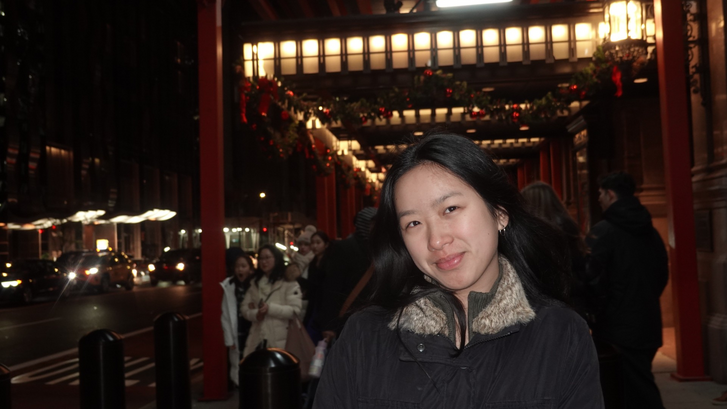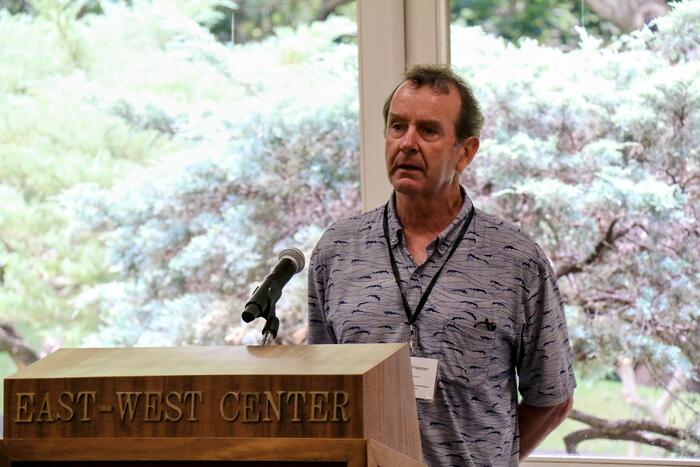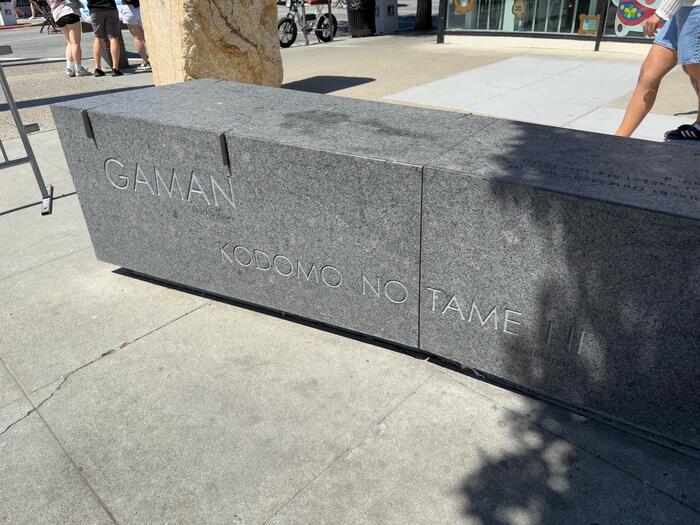Japan Day 2025: Recognizing the Highest Performing Students in Stanford e-Japan and the Reischauer Scholars Program
Stanford e-Japan enrolls exceptional high school students from Japan to engage in an intensive study of U.S. society and culture. The Reischauer Scholars Program (RSP) enrolls exceptional high school students from the United States to engage in an intensive study of Japanese society and culture. Both courses underscore the importance of U.S.ŌĆōJapan relations. is the current supporter of Stanford e-Japan, and the Japan Fund at the is the current supporter of the RSP.
On August 11, 2025, the 2025 Japan Day award ceremony was held at 91│į╣Ž to honor 91│į╣ŽŌĆÖs Spring and Fall 2024 Stanford e-Japan student honorees and the 2025 RSP student honorees. The honorees performed at the highest levels of their courses as determined by Stanford e-Japan instructors Waka Takahashi Brown (spring course) and Meiko Kotani (fall course), RSP instructor Naomi Funahashi, and the research paper review committees. The honorees are:
Spring 2024 Stanford e-Japan
Aoi Furutani, Saitama Municipal Urawa High School, ŌĆ£Comparative Analysis of Surrogacy Policies in the United States and Japan: Proposals for Introducing Surrogacy in JapanŌĆØ
Komari Machida, Crimson Global Academy, ŌĆ£Futoukou vs. Homeschooling: Exploring Societal Reintegration of Children Outside of Traditional School Systems in Japan and the United StatesŌĆØ
Sota Tajima, Seiko Gakuin High School, ŌĆ£Synergy in the Stars: How the U.S. and Japan Can Lead the Next Era of SpaceŌĆØ
Honorable Mentions:
Ryu Sato, Soka Senior High School, ŌĆ£Japanese and American Philanthropic Culture in Regard to College Financial AidŌĆØ
Sakura Suzuki, Hokkaido Asahikawa Higashi High School, ŌĆ£Designing School Buildings to Encourage Student Creativity: Comparing Historical Changes in School Buildings in Japan and the United StatesŌĆØ
Fall 2024 Stanford e-Japan
Ellen Nema, Junior and Senior High School Affliiated to Showa Pharmaceutical University, ŌĆ£Breaking the Chain of Poverty in Okinawa: Educational Approaches and FoundationsŌĆØ
Hirotaka Onishi, Kaisei Gakuen High School, ŌĆ£A Time for Reconsideration: Toward a New International Monetary OrderŌĆØ
Mia Yakushiji, Murasakino Municipal High School, ŌĆ£Dual Citizenship in JapanŌĆØ
Honorable Mentions:
Lynne Mizushima, Keio Shonan Fujisawa Junior & Senior High School, ŌĆ£The Lack of Female Political Leaders in Japan: A Cultural Glass CeilingŌĆØ
Kan Sugimi, Isahaya High School, ŌĆ£Should Bilingual Parents in the U.S. Raise Bilingual Children?ŌĆØ
2025 Reischauer Scholars Program
Bennett Feng, Horace Mann School, ŌĆ£From Economic Rebirth to Structural StagnationŌĆØ
Jessica Hu, The Harker School, ŌĆ£Dried-Up Rivers: State-Sponsored Linguistic Oppression and Its Erasure of Ainu IdentityŌĆØ
Ty Tan, Coral Academy of Science Las Vegas, ŌĆ£Recalibrating JapanŌĆÖs FOIPŌĆØ
Honorable Mentions:
Jackson Hayward, The Nueva School, ŌĆ£Shikata ga nai: Voter Apathy and Cultural Depoliticization in Modern JapanŌĆØ
Radoslav Kyselak, Highland Hall Waldorf School, ŌĆ£Norms Through Networks: JapanŌĆÖs Digital Diplomacy as a Counter to ChinaŌĆÖs Digital Silk Road in the Global SouthŌĆØ
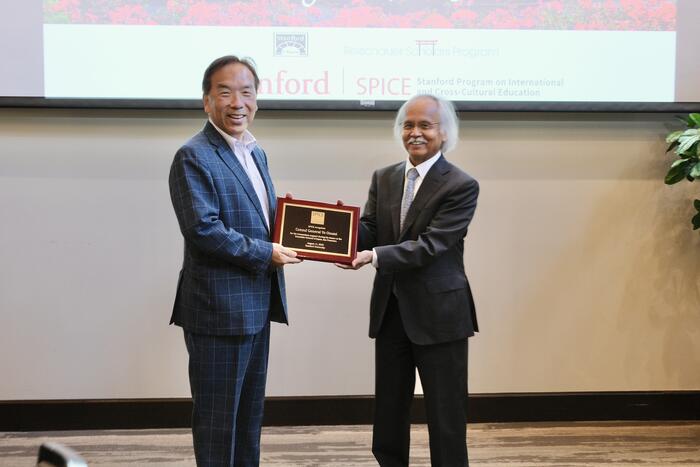
The program began with welcoming comments from the Honorable Yo Osumi, Consul General of Japan in San Francisco. He commented that the Reischauer Scholars Program and Stanford e-Japan are very important for our two nationsŌĆögiven that both engage future leaders in both countriesŌĆöand extended high praise to the honorees. Consul General OsumiŌĆÖs tenure ended at the end of August and on behalf of my colleagues at 91│į╣Ž, I presented him with a plaque from 91│į╣Ž to acknowledge his unwavering support of 91│į╣ŽŌĆÖs Japan programs.
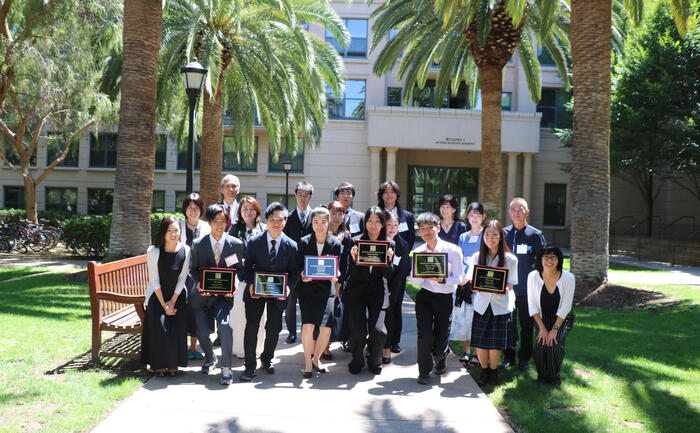
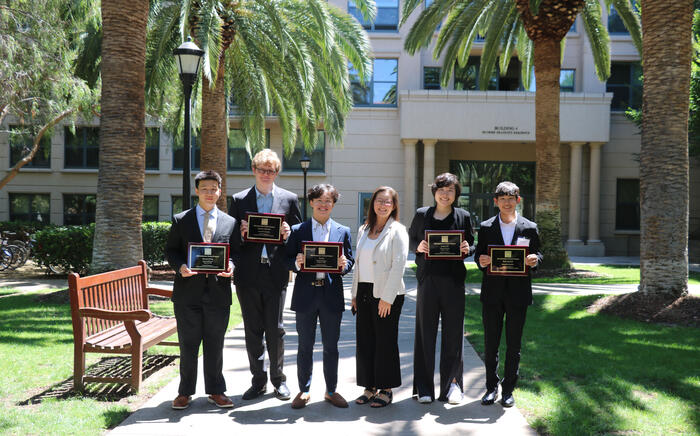
Following the welcoming and opening comments, Brown, Kotani, and Funahashi gave overviews of their courses and introduced the student honorees. The student honorees made engaging presentations based on their research papers and fielded very thought-provoking questions from the audience. Each honoree received a plaque from their instructor. The photo on the top is of the Stanford e-Japan honorees, and the photo on the bottom is of the RSP honorees; photo credit: Irene Bryant.
The RSP will enter its 23rd year in 2026, and Stanford e-Japan is about to enter its 11th year. Many of the alumni are studying U.S.ŌĆōJapan relations, engaged in various fields related to U.S.ŌĆōJapan relations, and continue to give back to both programs by being guest speakers and mentors to the new students.
Following the formal event, the student honoreesŌĆömost having just met each other in person for the first timeŌĆöhad the chance to enjoy a Stanford campus tour together. It is the hope of Brown, Kotani, and Funahashi that the Japanese and American student honorees will continue to strengthen their budding friendships and ensure that the U.S.ŌĆōJapan relationship remains strong.
91│į╣Ž is grateful to President Tadashi Yanai for his generous support of Stanford e-Japan and to the staff of the Yanai Tadashi Foundation for their regular correspondence and encouragement. 91│į╣Ž is thankful to the Japan Fund committee at FSI for its generous support of the Reischauer Scholars Program. These courses and the ceremony would not be possible without them. 91│į╣Ž is also grateful to 91│į╣Ž Event Coordinator Sabrina Ishimatsu for meticulously planning and implementing the event.
91│į╣Ž is currently accepting applications for the 2026 Reischauer Scholars Program. The deadline to apply is October 17, 2025.
The application for the 2026 session of Stanford e-Japan will open on November 15, 2025.
91│į╣Ž also offers online courses to U.S. high school students on China (China Scholars Program), Korea (Sejong Korea Scholars Program), and entrepreneurship (Stanford e-Entrepreneurship U.S.), to Chinese high school students on the United States (Stanford e-China), and to Japanese high school students on entrepreneurship (Stanford e-Entrepreneurship Japan).
To stay informed of 91│į╣Ž news, and follow us on , , and .
Read More
91│į╣Ž instructors Waka Takahashi Brown, Naomi Funahashi, and Meiko Kotani recognize their student honorees.




